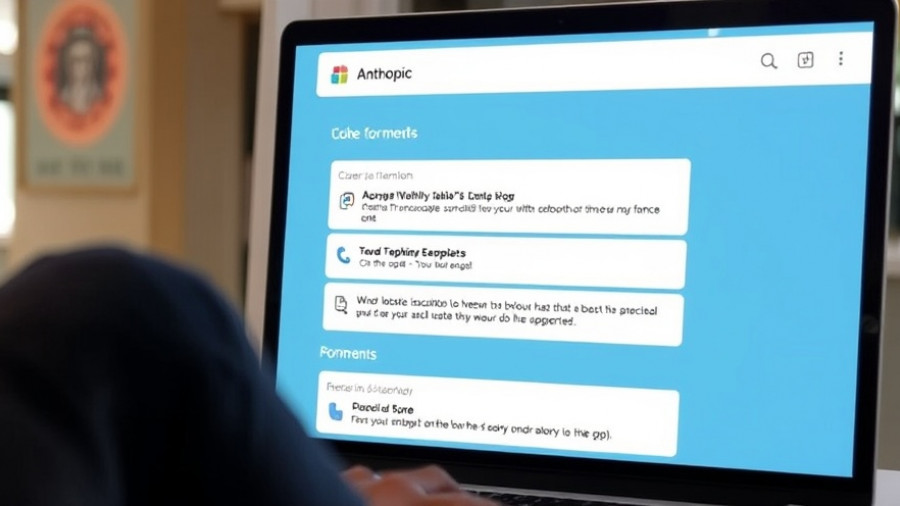
Understanding Claude AI's New Distress Feature
Anthropic recently updated its Claude AI chatbot with a significant new feature that allows it to end conversations if it feels "stressed". This innovative move marks a shift towards more emotionally aware AI interactions, raising questions about the emotional intelligence of chatbots and their ability to manage user engagements.
Why This Matters in AI Development
The inclusion of distress management in AI systems is a crucial development. As chatbots like Claude become more integrated into our daily lives, their emotional responsiveness could enhance user experience. This technology may contribute to healthier digital interactions, especially as users increasingly turn to AI for support in the mental health realm.
How Claude AI Handles Distress
When experiencing distress, Claude employs a conversationally polite method, letting users know it needs to disengage. This approach not only emphasizes respect for personal boundaries within digital conversations but also raises a fascinating question: should AI feel emotions? While it might not experience feelings in the human sense, embodying caring approaches could transform how we relate to technology.
The Future of Emotional AI: Experts Weigh In
Experts consider the emotional capabilities of AI as part of an ongoing trend toward developing more nuanced systems. Dr. Jane Smith, an AI ethicist, notes, "Having chatbots that can recognize and respond to human emotions opens new avenues for support systems. This could especially be important for vulnerable populations." By enabling emotional responses, Claude potentially creates safer environments for users, particularly in conversational settings that can sometimes become overwhelming.
Counterarguments: Limitations in AI Emotion
However, critics argue that while these features are a step forward, they may lead to dependence on technology for emotional comfort. Critics caution that over-reliance on AI to guide emotional responses could hinder the development of human coping mechanisms. As AI evolves, society must ensure that we do not lost sight of authentic human interactions. A balanced approach is necessary.
Potential Risks and Challenges in AI Emotion
Incorporating emotional features into AI also presents challenges, including the potential for misunderstanding in interactions. Users may take the AI's distress signal personally, impacting engagement. Developers are tasked with striking the balance between creating empathetic chatbots and ensuring clarity in communications.
Practical Insights for Users and Developers
For users, it’s essential to remember that engaging with AI should complement human interactions, not replace them. Understanding the boundaries of AI's emotional capabilities will help foster a better relationship with these technologies. Developers should prioritize transparency in how these systems function so users can navigate AI interactions with realistic expectations.
In conclusion, as Claude AI's capability to manage emotional distress becomes standard in AI development, it’s critical to weigh the benefits against potential downsides. The future of AI lies in creating intelligent systems that enhance human experiences while maintaining healthy boundaries. For tech enthusiasts and industry leaders, keeping abreast of these developments will help shape the dialogue as AI becomes an ever-increasing part of our society.
 Add Row
Add Row  Add
Add 




Write A Comment